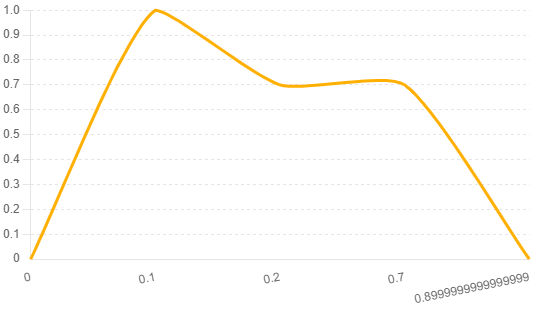Unleash the Power of ADSR: 5 Mind-Blowing Tricks to Sculpt Sounds Like a Pro
Are you ready to take your sound design skills to the next level? Buckle up, because you're about to discover the secret weapon that top producers use to create those jaw-dropping, dynamic sounds that leave listeners in awe. Welcome to the world of ADSR envelopes – the unsung heroes of sound shaping!
In this tutorial, we'll unravel the mysteries of Attack, Decay, Sustain, and Release, showing you how these four simple parameters can transform your flat, lifeless patches into breathing, evolving soundscapes. Whether you're a bedroom producer or a seasoned pro, mastering ADSR is your ticket to sonic nirvana.
1. ADSR Unveiled: The Four Horsemen of Sound Shaping
Before we dive into the tricks, let's break down what ADSR actually means:
- Attack (A): The time it takes for your sound to reach its peak volume after you hit a key.
- Decay (D): How long it takes for the sound to fall from the peak to the sustained level.
- Sustain (S): The volume level maintained as long as you hold the key down.
- Release (R): The time it takes for the sound to fade out after you release the key.

Now that you know the players, let's see how to make them dance!
2. The Punchy Percussion Trick: Crafting Kicks that Kick
Want to create a kick drum that punches through your mix like a heavyweight champion? Here's how:
- Set a very short Attack (0-5ms) for that initial click.
- Use a medium-short Decay (50-200ms) to shape the body of the kick.
- Drop the Sustain to zero – kicks don't sustain!
- Adjust Release to taste (usually short, around 100-300ms).
Pro Tip: Apply this envelope to both amplitude and pitch for that classic 808 sound!
3. The Lush Pad Technique: Creating Atmospheres that Breathe
Ready to transport your listeners to another dimension? Here's how to craft those ethereal, evolving pads:
- Set a long Attack (500ms-2s) for a gentle fade-in.
- Use a long Decay (1-3s) to allow harmonics to evolve.
- Keep Sustain high (70-90%) for that continuous dreamy sound.
- Set a long Release (1-3s) for a smooth, lingering fade-out.
Expert Move: Apply different ADSR settings to your filter cutoff for extra movement and texture!
4. The Plucky Lead Secret: Cutting Through the Mix
Want your lead synth to stand out without drowning everything else? Try this:
- Use a fast Attack (0-10ms) for immediacy.
- Set a short Decay (50-150ms) to create that initial pluck.
- Adjust Sustain to about 50-70% for a balanced sound.
- Keep Release short to medium (100-300ms) for clarity in fast passages.
Level Up: Experiment with different ADSR settings on your amp and filter envelopes for complex, layered sounds!
5. The Bass Groove Enhancer: Adding Movement to Your Low End
Want to make your basslines bounce and groove? Here's the secret sauce:
- Set a medium-fast Attack (10-50ms) for punch without losing the transient.
- Use a medium Decay (100-300ms) to shape the initial thump.
- Adjust Sustain to about 60-80% for a solid body.
- Experiment with Release (100-500ms) to control how notes flow into each other.
Next-Level Trick: Use slightly different Release times on your amp and filter envelopes to create subtle movement in sustained notes!
Bonus: The ADSR Modulation Magic
Ready for some advanced techniques? Try these mind-bending ideas:
- Use an LFO to modulate the Decay time for evolving textures.
- Assign velocity to control the Attack and Decay for more expressive playing.
- Create a "reverse" sound by setting a long Attack and short Decay/Sustain/Release.
Conclusion: Your Journey to Sound Design Mastery
Congratulations! You've just unlocked the power of ADSR envelopes. With these techniques in your toolkit, you're well on your way to creating professional, dynamic sounds that will take your music to new heights.
Remember, the key to mastering ADSR is experimentation. Don't be afraid to twist those knobs and push the boundaries. Your next chart-topping sound could be just an envelope adjustment away!
Ready to put your new ADSR skills to the test? Fire up NeoSynth.pro and start sculpting those sounds!
Launch NeoSynth.pro SynthesizerFAQs
-
Q: Can I use ADSR envelopes on effects like reverb and delay?
A: Absolutely! Many modern effects allow you to shape their behavior using ADSR envelopes. Try it on reverb tails or delay feedback for some truly unique sounds. -
Q: How do ADSR envelopes differ in analog vs. digital synthesizers?
A: While the concept is the same, analog envelopes often have a more "natural" curve and can interact with the signal path in unique ways. Digital envelopes offer more precision and can often be applied to more parameters. -
Q: Are there any "rules" for setting ADSR envelopes?
A: While there are no hard and fast rules, certain styles and sounds typically use similar envelope shapes. The best approach is to start with the guidelines we've provided and then adjust to taste. Trust your ears!